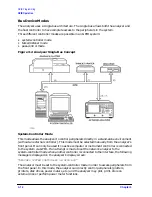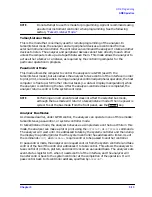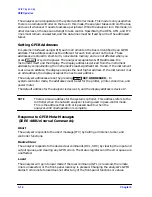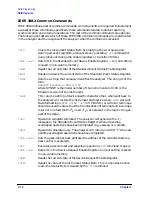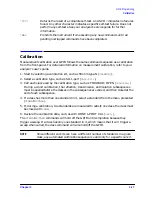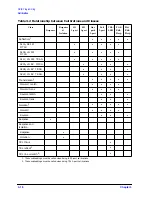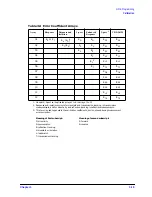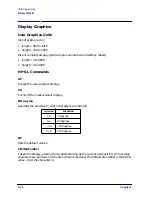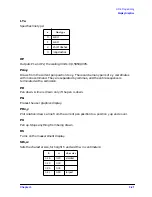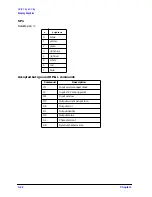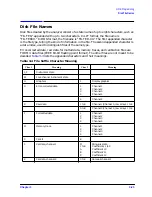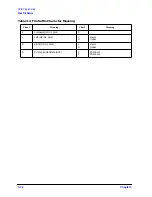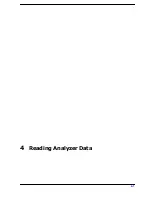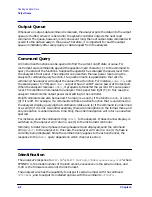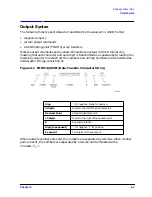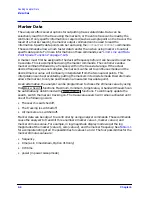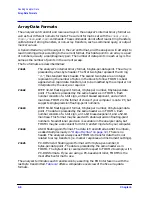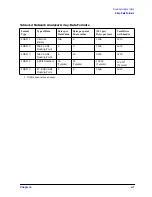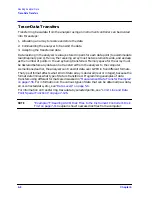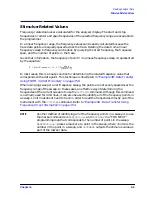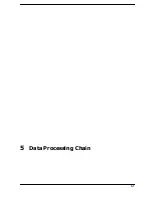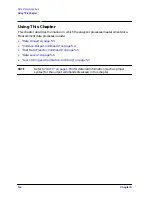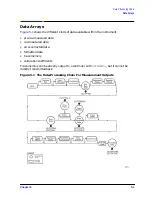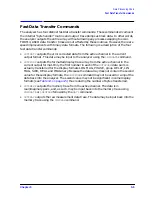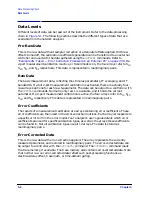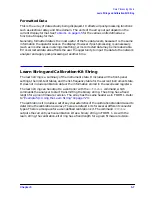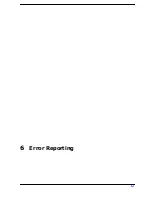
4-2
Chapter 4
Reading Analyzer Data
Output Queue
Output Queue
Whenever an output-data command is received, the analyzer puts the data into the output
queue (or buffer) where it is held until the system controller outputs the next read
command. The queue, however, is only one event long: the next output-data command will
overwrite the data already in the queue. Therefore, it is important to read the output
queue immediately after every query or data request from the analyzer.
Command Query
All instrument functions can be queried to find the current on/off state or value. For
instrument state commands, append the question mark character (
?
) to the command to
query the state of the functions. Suppose the operator has changed the power level from
the analyzer's front panel. The computer can ascertain the new power level using the
analyzer's command-query function. If a question mark is appended to the root of a
command, the analyzer will output the value of that function. For instance,
POWE 7DB;
sets
the source power to 7 dB, and
POWE?;
outputs the current RF source power at the test port.
When the analyzer receives
POWE?;
, it prepares to transmit the current RF source power
level. This condition illuminates the analyzer front-panel talk light (T). In this case, the
analyzer transmits the output power level setting to the controller.
On/off commands can also be queried. The reply is a one (1) if the function is on, or a zero
(0) if it is off. For example, if a command controls an active function that is underlined on
the analyzer display, querying that command yields a one (1) if the command is underlined
or a zero (0) if it is not. As another example, there are nine options on the format menu and
only one option is underlined at a time. Only the underlined option will return a one when
queried.
For instance, send the command string
DUAC?;
to the analyzer. If dual-channel display is
switched on, the analyzer will return a one (1) to the instrument controller.
Similarly, to determine if phase is being measured and displayed, send the command
string
PHAS?;
to the analyzer. In this case, the analyzer will return a one (1) if phase is
currently being displayed. Since the command only applies to the active channel, the
response to the
PHAS?;
query depends on which channel is active.
Identification
The analyzer's response to
IDN?;
is “
HEWLETT PACKARD,87NNEX,xxxxxxxxxx,X.XX
” where
87NNEX is the model number of the instrument, xxxxxxxxxx is the serial number, and
X.XX is the firmware revision of the instrument.
The analyzer also has the capability to output its serial number with the command
OUTPSERN;
, and to output its installed options with the command
OUTPOPTS;
.
Summary of Contents for 8719ES
Page 15: ...1 1 1 Alphabetical Command Reference ...
Page 293: ...2 1 2 Introduction to Instrument Control ...
Page 310: ...3 1 3 GPIB Programming ...
Page 334: ...4 1 4 Reading Analyzer Data ...
Page 343: ...5 1 5 Data Processing Chain ...
Page 350: ...6 1 6 Error Reporting ...
Page 364: ...7 1 7 Programming Examples ...
Page 502: ...A 1 A Preset Conditions ...
Page 517: ...B 1 B Command Listings ...

